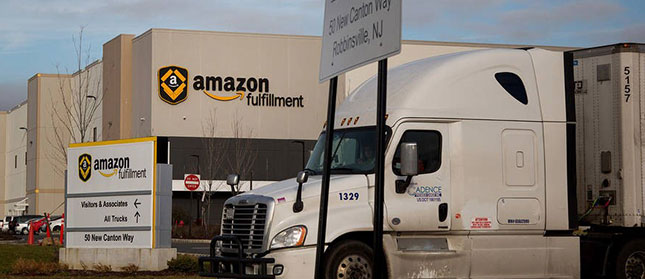The “Amazon Effect” could explain the recent spike in driver turnover. Traditionally, driver turnover rates go down when freight demand is relatively soft, as it was in 2019, but turnover has counterintuitively been rising, according to industry experts.
CCJ reports the term “Amazon Effect” is generally used to describe the metamorphosis of supply chains in response to rising consumer expectations for delivery of goods purchased online or in stores. Shippers are changing their freight distribution models to shorten the distances between warehouses and customers to achieve same and next-day deliveries.
The American Trucking Associations (ATA) reported turnover increased 9 points during the third quarter of 2019 for large carriers, hitting an annualized rate of 96%. The ATA defines large truckload fleets as those with more than $30 million in annual revenue.
The third-quarter increase was the largest quarterly uptick recorded by ATA since the second quarter of 2016, and the 96% churn is the highest on record since the second quarter of 2018. Smaller carriers saw turnover increase six points to hit a 73% annualized rate.
Driver pay was supposed to be less of an issue when the trucking industry made significant increases to mileage-based pay rates in 2018. Carriers maintained their rates in 2019, but drivers are getting fewer miles. According to a recent survey of 62 truckload carriers, average annual miles for drivers fell 11% in 2019 from 124,244 in 2018 to 108,777 in 2019.
The survey was conducted by CarriersEdge, a provider of online driver training courses, in partnership with the Truckload Carriers Association (TCA) for its Best Fleets to Drive For program. Carriers surveyed for the TCA program ranged from small operators of 14 trucks to mega fleets with more than 8,000 power units.
Average length-of-haul (LOH) for truckload shipments has been sliding for at least a decade, but the trend has accelerated in the last 24 months.
The average LOH for publicly traded truckload carriers was 574 miles in 2010 and 510 miles in 2019. Data from FTR, a leader in freight transport intelligence, shows the average length of haul — measured in miles per freight ton — declined by 7.2% from 2010 to 2019 for Class 8 tractor-trailers.
The Commodity Flow Survey, released every five years by the Department of Transportation, shows the average shipment distance for all trucks declined 17.2% from 2012 to 2017.
Driver turnover in some sectors of the trucking industry has been decreasing. Less-than-truckload carriers saw a drop in driver turnover by four points in the third quarter of 2019, according to ATA. LTL carriers hit an annualized rate of 9% – the lowest level since the fourth quarter of 2017. LTL carriers have largely benefitted from e-commerce.
In 2019 and into 2020, some truckload carriers have found solutions to keep driver wages up despite their mileage going down.
Mark Murrell, president of CarriersEdge, says that truckload carriers surveyed by TCA’s Best Fleets to Drive For program have adjusted their pay structures to compensate for non-driving time. Over the last two years the industry trend has been guaranteed pay programs and salaries.
“It’s getting to a point that there are not very many [carriers] that don’t have a guarantee of some sort. It might be a full salary or guaranteed ‘X’ number of miles,” he says.
Some finalists for the TCA program are paying their drivers for detention at shippers and receivers starting after one hour, he noted.
Full article here.
